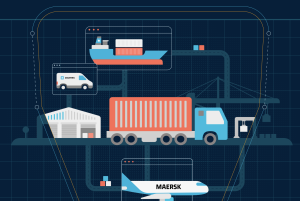 Organisations will dramatically increase their dependence on suppliers for products, services, manpower, expertise, and new ideas.
Organisations will dramatically increase their dependence on suppliers for products, services, manpower, expertise, and new ideas.
This is the consensus reached in a report ‘VISION 2020: Ideas for Procurement in 2020 by Industry-Leading Procurement Executives’, which is the outcome of a dialogue between Ariba and leading procurement practitioners and influencers.
Innovation comes from without
2020 will see a big emphasis on driving and taking innovation from the supply base. However, the supply role will be less ‘person-who-brings-innovation-in’ and more person-who-assembles-innovation-communities-and-gets-out-of-the-way’.
“We already have a goal that some 40% of what we create should come from outside companies. That target is only going to increase as we move toward 2020,” says Donald Ferguson, Head of Procurement Operational Excellence for AstraZeneca. “Having an ability to screen the entire global population of suppliers, universities and research institutions will help us to identify not only the next generation of medicines but also the best ways for getting them to people all over the world.”
Roy Anderson, VP Procurement Services for Metasys Technologies, suggests also that supply managers will need to go beyond merely looking for innovation in the supply base. “Our job,” he says, “will be to drive innovation where it is needed in the supply base.”
An important role for supply management pros will be to segment and formalize innovation relationships in ways that protect intellectual property, manage risk, and ensure the competitive advantage flowing from customer-supplier innovation always stays with the parties who drive it.
As Sodexo’s Chief Procurement Officer Ann Oka describes it, “Our supply chain comprises many consumer packaged goods (CPG) and finished product manufacturers. We rely heavily on their insights into consumer trends and their innovation to develop new products and offers for clients. But, in a world where we are taking down barriers, we need to be very good at mapping where things are proprietary.
The challenge for supply managers is to get much better at segmentation and really formalizing these relationships to ensure they create and sustain competitive advantage for our company, our suppliers and for our diverse and unique clients.”
“If you are working to find a new product or co-developing with a supplier,” adds Huntington National.
Bank’s Chief Sourcing Officer Debbie Manos-McHenry, “you have several jobs as a sourcing pro:
• You need to ensure all the appropriate intellectual property (IP) protections are in place.
• You need to be abreast of all the potential suppliers, what they have to offer, and how they might help to get your people thinking out of the box on new product development, and
• You must be able to weigh the risks and rewards of working with a more established supplier — who may carry less risk — versus a start-up, who might be riskier but offers you an opportunity to move past your competition in the market.”
Sourcing Interests Group (SIG) President & CEO Dawn Evans suggests that procurement must also be fearless about selling innovation and influencing for change. “Suppliers have so many great ideas that we stop at the door because they require us to implement changes in our own organizations; we don’t capitalize on their R&D and all they observe in other organizations.”
Bye products, hello solutions
Suppliers in the coming decade will continue to take on bigger pieces of things they already do for customers. Think of it as ‘integrated supply on steroids’ where suppliers step out of their comfort zones to drive customer performance.
“I expect to see a lot more total solution-type relationships with suppliers, whether it’s an OEM, a third-party distribution partner, or a marketing partner,” says Larry Welch, formerly of Hewlett-Packard.
So, for example, a supplier of printing hardware for the office will either morph into — or be replaced by — a supplier of total print management solutions. The solution provider will take on the responsibility for things like:
• Optimizing office productivity in the placement and quantity of printers.
• Reducing total printing costs from a 360-degree perspective, covering costs and total consumption of printing supplies, costs associated with service, support, equipment upgrade and replacement, and so forth.
• Developing and implementing printing best practices within the customer’s organization, for example, two-sided printing, black and white versus colour printing, copy-centre versus individual printing, and so forth.
Where end-to-end supplier solutions do not already exist, suppliers are expected to develop them. And where the solutions already exist, project participants expect customer enterprises to become much more receptive to sourcing them in the coming decade. “There is a need to find creative solutions in just about any of the work that we do,” observes former GM Executive Director, Global Purchasing Barbara Whittaker. “Take an example like call centres, which so many companies use. Finding the right creative solution around call centres is something that can bring tremendous value to our end customers.”
However, finding those creative solutions relies on developing new models for buyer-seller relationships and for creating direct connections between solution providers and internal stakeholders. “When we allow the people bringing solutions to talk directly to our internal stakeholders — to sell the benefits of their solutions directly — you see internal resistance breaking down,” concludes Whittaker.
The information in this article was sourced from the report ‘VISION 2020 Ideas for Procurement in 2020 by Industry-Leading Procurement Executives’.


























